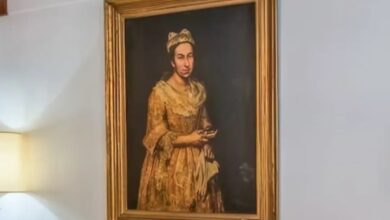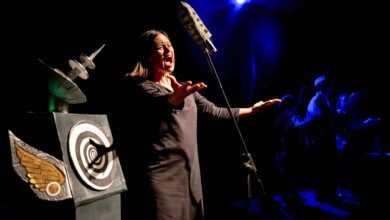The obstacles of the online diffusion of the arts
Since the COVID-19 lockdowns jobs are developing digitally, whereas the artistic world is struggling with the lack of face-to-face contact and the governmental underfunding that they have been experiencing.

Confinement in the wake of the pandemic has given artists a hard time given their need for face-to-face contact. / Photo: Pexels
LatinAmerican Post | Ana María Betancourt
Listen to this article
Leer en español: Los obstáculos en la difusión en línea de las artes
The pandemic lockdowns have forced people to adapt to their jobs digitally, but in some arts face to face contact is essential to have an artistic experience, learning, diffusion, and socialization. In addition, this issue is worsening the underfunding of the arts globally.
When the crisis lockdowns began to be widespread the artists and the artistic promotors had to use some tools like Facebook lives, Instagram lives, YouTube videos, and so on, to keep working on their artworks. “In Casa Tinta we transferred everything to our digital platform. Initially, we started to publish Instagram lives –now everybody is doing that, yet in that moment it wasn´t ubiquitous–. I programed three weeks of lives from Monday to Saturday. In the first weeks we had 7.000 new followers in Instagram. The lives usually had 200 to 250 assistants”, says José Rosero, a plastic artist and the owner of Casa Tinta, an artistic café-gallery.
After a while, the people got tired of those meetings and the assistants decreased. This has been an issue for most of the artistic spaces. Also, the people have a lot of free content available, so it reduces their interests in art spaces or artistic participation.
“I think that at the beginning the reception of watching concerts at home was beautiful and very open, whereas this is not going to keep happening after some time. I don´t know for how long this online concert honey moon is going to last”, says Nacho Riveros, a musician.
"The arts are not only about looking at an image, performance, choreography, play, or listening to a song, an artwork needs of the participation and the interpretation of the people who experience it", said the plastic artist José Rosero, “the art is not only the image, but the experience in front of the image”.
Also read: COVID-19: How Latin American students struggle during the crisis?
Nevertheless, the issue related to the online artistic diffusion is not only because of the tiredness of being online or the wide variety of contents the people have; it is also about the lack of people participating in these spaces and the shortage of governmental funding.
“Art is not a priority for the government, in this moment lots of academies, theatres, and galleries had to lower the curtain. The financial support is almost null. There has been a lack of vision in the artistic stimuli in general, but this year it exceeded the limits”, says Cristina Sanchez, a ballet dancer, and teacher.
The arts funding shortage has been active before the pandemic economic recession. In fact, according to the Colombian General National Budget of 2019, the category named Culture, Sports, and Entertainment received 0.2% of the total budget.
“The economic crisis has been affecting the arts always, even before the pandemic. It is not new because for the State neither the arts, education, nor critical thinking are a priority. For any capitalist State and even less for the South American States they are, indeed”, says Brigitte, a contemporary dancer, and teacher.
On the other hand, an advantage of online art socialization is the democratization of the arts. As the internet makes public some artworks, the citizens have these contents available. “The advantage of art in a virtual stage is globalization. You publish your music on social media and you enter in a global democracy, you can reach every part of the world. That democratizes the art”, said Nacho Riveros.
But even if this possibility is opened with the digital diffusion, most of the artists have the perception that their audiences are still the same as the ones before the pandemic because the people are bound to choose contents within their same cultural system.
Overall, the online development of the arts is not as effective as the development of some other fields.
Libardo Mejía, a theatre actor, says that “being face-to-face is important for humanity, not exclusively for the arts. Maybe the virtual webs open some possibilities, but we will keep losing the human sensibleness insofar as we keep taking distance"
As a matter of fact, perhaps the difficulties that the arts are finding in the online diffusion and the lack of face-to-face contact are the ones that the society is facing with the lockdown: isolation and the fear of having physical contact with others because of the risk of getting sick.




